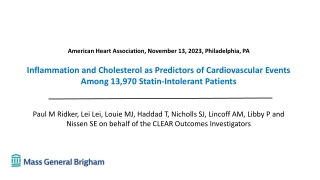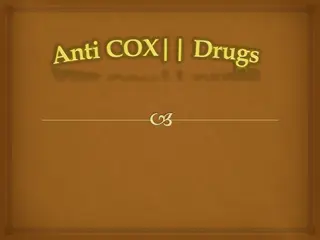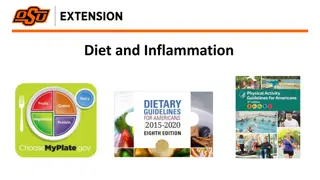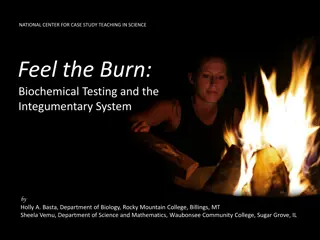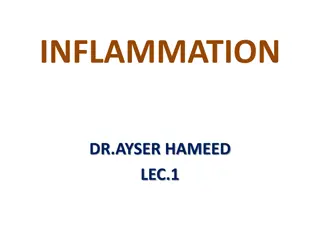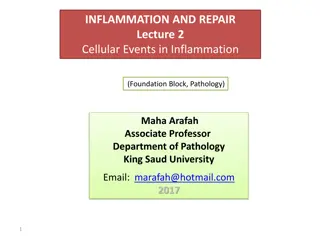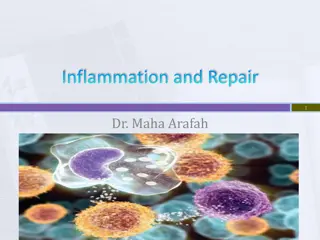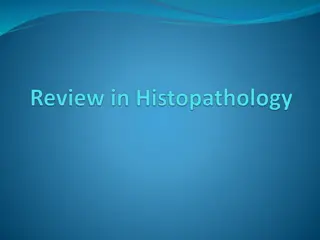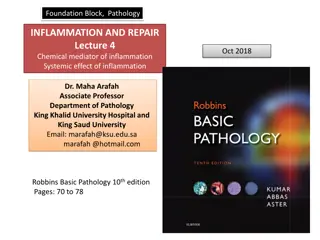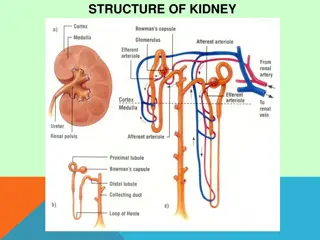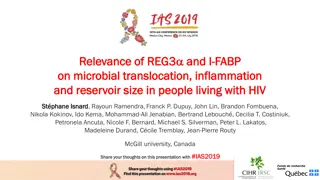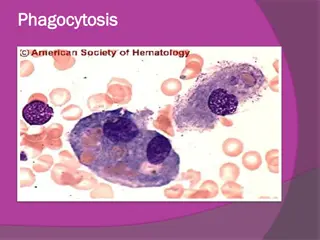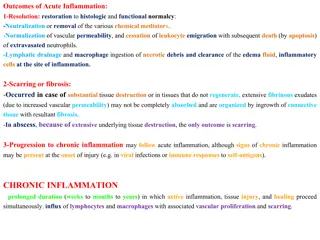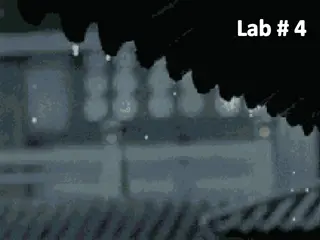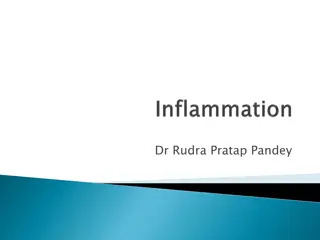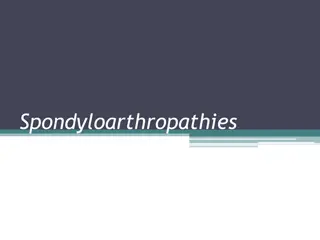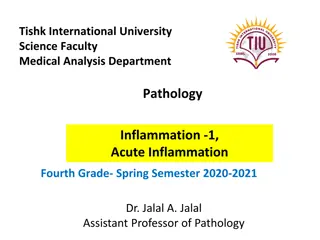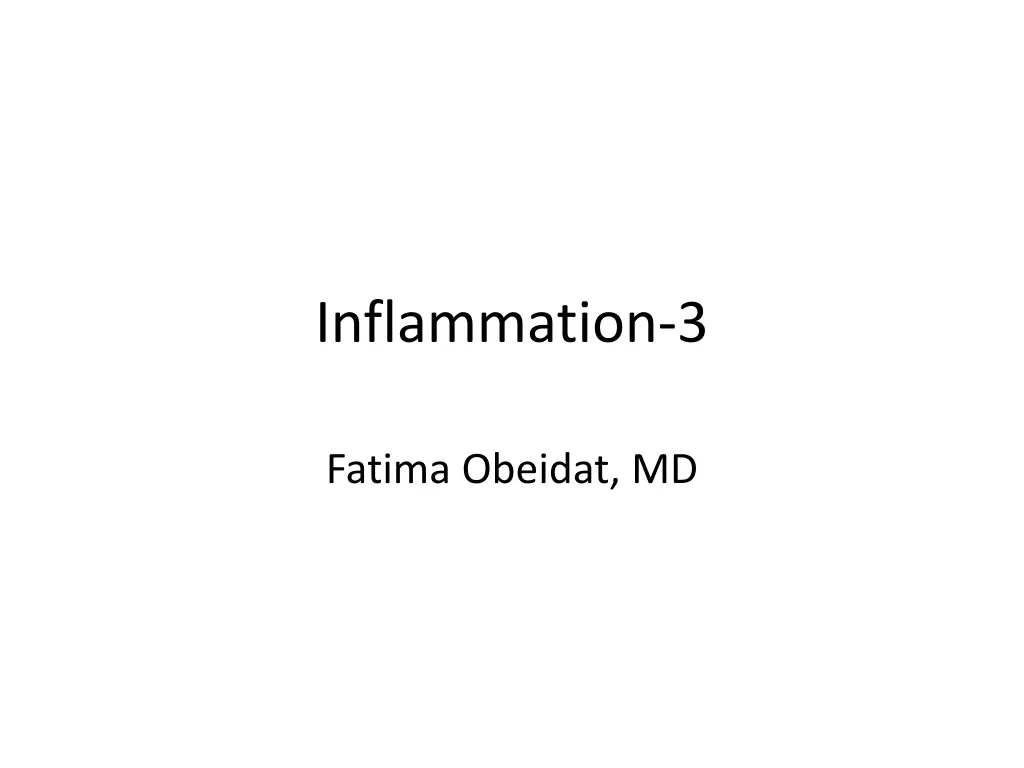
Understanding Chemical Mediators of Inflammation
Explore the role of chemical mediators in inflammation, including cell-derived and plasma protein-derived mediators. Learn about the general principles and mechanisms of action of these mediators in regulating the inflammatory response. Discover the functions of vasoactive amines like histamine and serotonine, as well as the actions of arachidonic acid metabolites such as prostaglandins, leukotrienes, and lipoxins.
Download Presentation

Please find below an Image/Link to download the presentation.
The content on the website is provided AS IS for your information and personal use only. It may not be sold, licensed, or shared on other websites without obtaining consent from the author. If you encounter any issues during the download, it is possible that the publisher has removed the file from their server.
You are allowed to download the files provided on this website for personal or commercial use, subject to the condition that they are used lawfully. All files are the property of their respective owners.
The content on the website is provided AS IS for your information and personal use only. It may not be sold, licensed, or shared on other websites without obtaining consent from the author.
E N D
Presentation Transcript
Inflammation-3 Fatima Obeidat, MD
CHEMICAL MEDIATORS AND REGULATORS OF INFLAMMATION
Inflammatory mediators Cell derived : Produced locally by cells at the site of inflammation (histamine, Prostaglandins). OR Plasma protein derived : Derived from circulating inactive precursors (from liver) that are activated at the site of inflammation (complement, bradykinin).
General principles Act by binding to receptors,,, on different target cells. May act on only one or a very few cell types, or they may have diverse actions. Some mediators (e.g., lysosomal proteases, reactive oxygen species) have direct enzymatic and/or toxic activities. The actions of most mediators are tightly regulated and short-lived (spontaneous decay, inactivation, elimination or inhibition) .
Quick decay (e.g., arachidonic acid metabolites) Enzymatic inactivation (e.g., kininase inactivates bradykinin) Elimination (e.g., antioxidants scavenge toxic oxygen metabolites), Inhibition (complement-inhibitory proteins)
Cell-Derived Mediators Derived from: 1-Tissue macrophages. 2-Mast cells. 3-Endothelial cells. 4-Leukocytes.
Vasoactive Amines Histamine and serotonine Histamine: Source: Mast cells,,,, basophils and platelets. Stimuli for release: (1) Physical injury . (2) Immune reactions (IgE mediated) (3) C3a and C5a (anaphylatoxins) (4) Histamine-releasing proteins. (5) neuropeptides (e.g., substance P) (6) Certain cytokines (e.g., IL-1, IL-8).
Actions : Vasodilation. Increased vascular permeability Endothelial activation
Arachidonic Acid Metabolites: Prostaglandins, Leukotrienes, and Lipoxins
Two major enzymatic pathways: 1-Cyclooxygenase pathway: Produces prostaglandins and thromboxanes, 2-Lipoxygenase pathway: produces leukotrienes and lipoxins
Prostaglandins and thromboxanes PGE2, PGF2 . PGD2 (in mast cells) PGI2 (prostacyclin) in endothelial cells. Thromboxane A2 (in platelets) Opposing roles of PGI2 and TXA2 (prostacyclin synthase in endothelial cells and thromboxane synthase in platelets)
Actions : TXA2, platelet-aggregation and vasoconstriction. PGI2: vasodilator and inhibitor of platelet aggregation PGD2 along with PGE2 and PGF2 : vasodilation and edema formation. PGE2: pain and fever.
ThromboxaneA2 prostacyclin Produced in platelets Produced in endothelial cells vasoconstrictor vasodilator Stimulate platelet aggregation Inhibit platelet aggregation
Leukotrienes LTA4, LTB4, LTC4, LTD4, and LTE4. LTB4: Actions: chemotactic agent for neutrophils. LTC4, LTD4 and LTE4: Source: mast cells Actions: bronchoconstriction, vasoconstriction and increased vascular permeability
Lipoxins. Anti-inflammatory mediators Produced in tissues From leukocytes and platelets Inhibit neutrophil chemotaxis and adhesion to endothelium Endogenous antagonists of leukotrienes
COX family COX is a family of several enzymes divided to two subfamilies COX 1 and COX2. COX 1 products are produced during inflammation but also in normal tissue where they protect the gastric mucosa and maintain fluid and electrolyte balance in the kidney. COX 2 products.. Only in inflammation
When patients are given NSAIDS.. COX 1 and COX2 are inhibited.. That s why patients develop gastric upset (gastritis and ulcers). New drugs: COX 2 inhibitors.. So products of COX 2 inhibited whereas COX 1 (protective, good prostaglandins) are produced normally.
PROBLEM with COX2 inhibitors Although COX 2 inhibitors protect the stomach, they can cause another problem!!! Thromboxane A2 is a product of COX1 family whereas prostacyclin is a product of COX 2 . So COX 2 inhibitors disturb the balance between these two .. resulting in increased risk of thrombi.
Glucocorticoids Powerful anti-inflammatory agents. Inhibit phospholipase A2 Block release of AA from membrane phospholipids.
Platelet activating factor From membrane phospholipids by phospholipase A2. Source: Neutrophils, monocytes, basophils, platelet, endothelial cells and other cells. Actions: Platelet stimulation Potent broncho-constrictor. Potent vasodilator. Increase vascular permeability. Stimulates synthesis of other mediators.
Cytokines (TNF, IL-1, IL-6, chemokines) Polypeptides. TNF and IL 1 Source: activated macrophages++mast cells, endothelial cells. Actions : Endothelial activation, expression of adhesion molecules. Increase production of other cytokines and AA metabolites. Systematic effects: Fever, Lethargy, cachexia, neutrophilia, Decreased blood pressure (also IL-6 plays a role) TNF increase thrombogeniicity of endothelium.
Chemokines Small proteins. Actions: Chemo attraction. Control normal organization of lymph nodes. Activate leukocytes...increase affinity of integrins
Neuropeptides Substance P. Produced from nerve fibers. Actions: Transmit pain signals. Regulate vessel tone. Modulate vascular permeability.
Nitric oxide Short lived. Soluble free radical gas. Synthesized de novo from arginine by nitric oxide synthase (NOS): Type 1 NOS, neuronal.. No role in inflammation. Type 2 NOS,.. inducible, in macrophages and endothelial cells and others Type 3 NOS in endothelial cells.
Nitric oxide ACTIONS: Microbicidal Vasodilator Antagonist for platelet aggregation. Reduced leukocyte recruitment
Bradykinin Responsible for pain in acute inflammation

